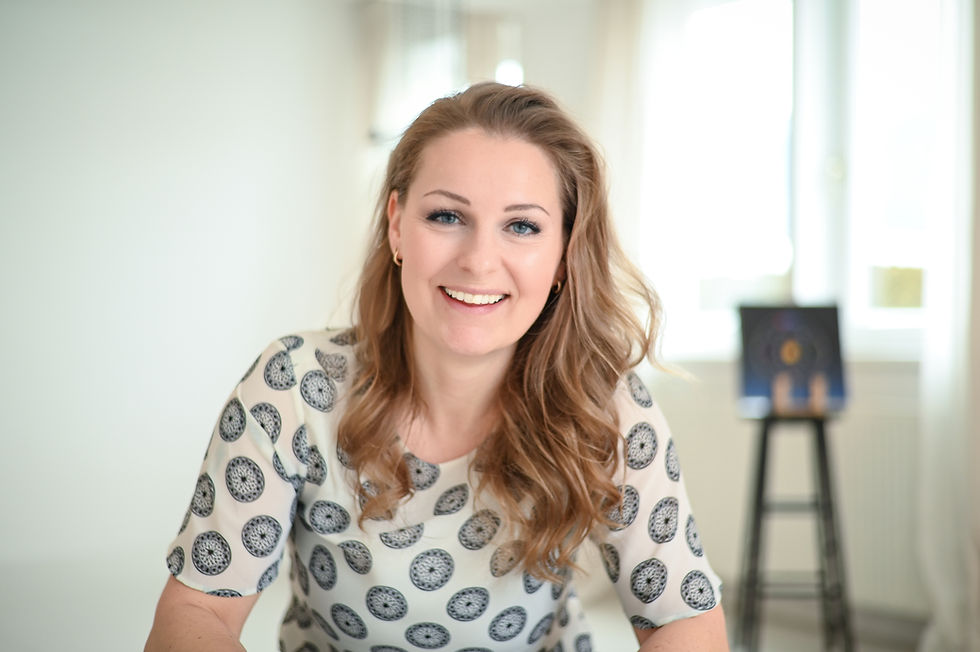The Secret to Successful Design Projects: Clear Communication, Honest Feedback
- Helene Clara Gamper

- Sep 16
- 4 min read
Most branding and web design projects don’t fail because clients give “bad feedback.” They fail because of misleading communication between designer and client – which inevitably creates unclear, conflicting, or even misleading feedback. The result? Endless revision rounds, wasted time, and frustration on both sides.
“The collaboration with HCG Corporate Designs was excellent. The preliminary communication and the implementation of our wishes were 100% fulfilled,” says Johanna Penz of GALARTERY (one of our clients), illustrating how clarity from the start makes all the difference.
As UXDesign editorializes: “Feedback is incredibly important for setting up a culture of trust … designers don’t need to question whether their work is any good.” This underscores why our feedback system is built on transparency and mutual understanding.
At HCG corporate designs, we’ve developed a feedback process that eliminates the guesswork, builds trust, and keeps projects on track from day one. In this article, we'll share how we gather honest client feedback and turn it into a powerful driver for project success.

This blog article was inspired by preliminary discussions about our “Ultimate Masterclass for Branding & Web Design”, as we were asked several times: “How do you present a website to your clients – and how do you get constructive feedback that you can actually use?”
Our answer: We leave nothing to chance. Feedback isn't a necessary evil, but a key element for efficient, successful design projects – especially when it comes to branding and professional web design.
The basis: clarity from the start
Before we even begin with the branding design process, we work with our clients to define the brand vibe – the feeling a brand should evoke in its target audience. This isn't a gut feeling, but a clearly defined, jointly developed framework.
We use an interactive online tool in two different versions, which we have adapted to our individual needs. This allows us to specifically assess emotions, associations, and styles, and explore them together with the client. This is complemented by a detailed briefing that has matured over the past 15 years into a true strategy tool.
This clarity right from the start makes a huge difference.

The thing is: If the briefing is set, the brand vibe is clear and the target group remains in focus, the design direction is consistent from the start – and feedback discussions revolve around subtleties, not fundamental questions.
That's why we usually need a maximum of two rounds of feedback – often just one – because the direction is clear early on. And because communication doesn't begin with a website launch.
Detailed feedback instead of vague gut feeling
Of course, it can still happen that a client says: “I don’t like this somehow.”
That’s human nature – but we can’t and don’t want to work with that.
That’s why we ask specific questions, such as:
“What exactly bothers you – the colors, the typography, the structure?”
“How does the navigation feel – intuitive or cluttered?”
“Is the content understandable and well structured?”
Through intensive questioning, we translate subjective impressions into concrete action points that we can specifically implement in branding and web design.
Advanced tips for dealing with subjective feedback:
Reframe emotional language: If a client says “It feels too cold”, we ask them to describe what “warm” would look like to them (e.g., more vibrant colors, softer imagery, friendlier wording).
Separate personal taste from brand goals: We remind clients that design should primarily serve their target audience, not just individual preferences.
Offer guided choices: Instead of asking “What do you want?”, we present two or three variations and guide them to express which aligns best with the brand strategy.
Use stylescapes: We create stylescapes early on in the branding process, that explore different visual directions (e.g., minimalistic, bold, elegant) and use them as a common language to align client expectations early on.
This way, even vague or emotional statements become valuable input – and the client feels both heard and guided toward clarity.
Smart tool: Feedback directly in the web design
For web design projects, we use the integrated feedback feature in the Wix Studio dashboard. This allows our clients to comment directly on the design – at the exact point in the layout where the question arises.
This not only saves endless email conversations, but also ensures transparent, efficient collaboration.
Because good branding and professional web design don't happen by chance. They're the result of clear thinking, good communication – and a structured feedback process.
Want to dive even deeper? Then it's time for the masterclass!
In our “Ultimate Masterclass for Branding & Web Design” we share our entire approach (including all details about "The Moonwalking Tiger" of course):
How we develop the brand vibe together with the client
What our proven briefing looks like
How we design the feedback processes in detail
And how we save time, nerves and unnecessary feedback rounds




Comments